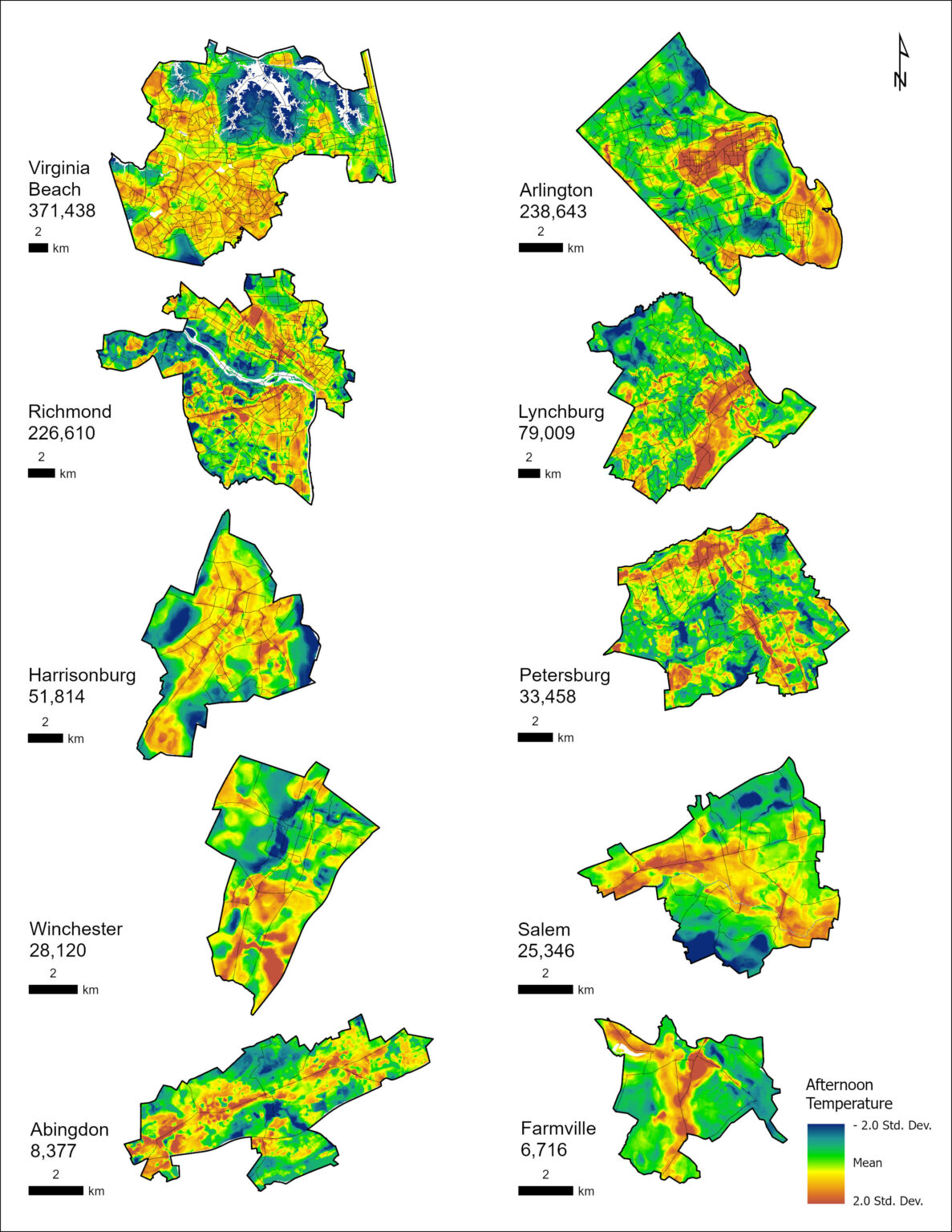By Shannon Hecht
(VM) – As hot and humid summer weather settles across Virginia, a recent study finds that certain neighborhoods across the state, often with higher populations of people of color, can be up to 15 degrees hotter than other areas. The research cites extreme heat as the cause of “more fatalities in the United States than any other weather phenomenon.”
“There are differences in all of those municipalities in who is experiencing this heat, and usually it’s the neighborhoods that are least prepared to deal with it, have the poorest kind of infrastructure setup, such as air conditioning units and cooling centers,” said Dr. Todd Lookingbill, a professor of geology, environment and sustainability at the University of Richmond.
On a hot summer day in July 2021, over 200 volunteers with the study collected air temperature data in Arlington, Richmond, Lynchburg, Harrisonburg, Virginia Beach, Winchester, Farmville, Petersburg, Salem, and Abingdon. The areas of these towns that were the hottest had low tree cover and expansive concrete spaces that correlated with parts of town that had been historically underinvested, in part due to redlining practices.
In some of the cities that did not have large populations of people of color, other factors such as unemployment and education were common indicators in the areas that were found to be the hottest.
The Virginia Heat Watch initiative included researchers from 12 universities and colleges from all reaches of the state. The volunteers collected hundreds of thousands of temperature readings in one day.
The study also found that the hot spot neighborhoods often have high populations of people with health vulnerabilities that make high heat a major risk factor. Exposure can lead to feedback loops of poor health and an inability to work.
“One of the things that’s really interesting in that regard is bus stops. In these kinds of areas, people tend to take more public transportation,” Lookingbill said. “We found that a lot of those bus stops are areas that are uncovered and don’t have a lot of tree cover or artificial bus stop cover.”
Some of the cities are taking proactive steps to make tree cover and other cooling techniques a priority in their city planning. Richmond has ideas for the expansion of green space and incentives for developers to keep or plant trees in the Richmond 300 master plan.
The Virginia Department of Forestry helped fund this study as part of their outreach to communities about their tree canopy mapping service. Communities can apply for grants to have the maps made, which will often line up with the hotspot data from the study.
“If we can get the word out that these programs exist, you know, local people who are aware of the issues that they face, they can reach out to us and have us come and assist. There are programs out there. We would just like people who need them to participate in them,” said Molly O’Liddy, Urban and Community Forestry Coordinator with the Virginia Department of Forestry.
O’Liddy said that the department is focused on not just urban areas in the largest cities. They also want to reach the smaller communities to show them where green space can help cool things down in parking lots, on sidewalks, or other areas of town.
Study shows historically redlined Virginia neighborhoods are hotter in the summer



